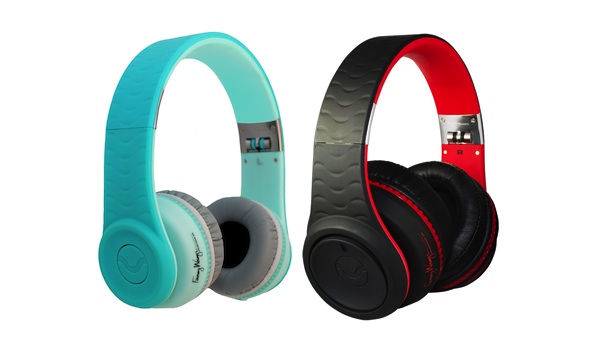Fanny Wang. If you’re American or Canadian, the name is a shade ridiculous and slightly funny. If you’re a Brit or Aussie, the name is completely rude and absolutely hilarious. I recently picked up a set of 1000-series on-ear Wangs ($169.95) and 3000-series over-ear Wangs ($299.95). Whimsical branding aside, the question is: are they worth a damn?
Meet the Wangs
You don’t need to be an audio engineer (or even much of an audiophile) to hear the difference between a pair of Fanny Wangs and some regular ol’ buds, or even slightly expensive buds. I listened to sound files from .mp3 to .ogg, and Fanny Wangs have clear aural superiority. Plugging them into my cousin’s record player (because why not test them against the warmth of vinyl?), the results were much the same. Fanny Wangs deliver full, deep, authentic sound.
So, Fanny Wangs do what expensive headphones are supposed to do: they sound good. What else are you paying for?
Over-ear Wangs have a noise cancelling setting, promising to “eliminate over “95% of ambient noise.” Two microphones measure ambient noise inside the cup while two more do the same on the outside. The headphones (batteries required) send a “cancelling signal” which “effectively attenuates” interfering noise. I haven’t the foggiest idea if that makes any kind of goddam sense, but I’m happy to report that they work.
Street Test
I took both sets of Wangs on a street test, walking up and down Toronto’s College Street on a Friday at about 11 p.m. — the clubbing hour — playing some gentle Old Crow Medicine Show.
Over-ear Wangs do, in fact, block most ambient noise, from belligerent sports fans to shrill girls celebrating their twenty-second birthday. They even blocked most of the siren on the ambulance that arrived to help said birthday girl continue her party at the hospital; I’d say the siren became fairly audible when it was about three blocks away.
On-ear Wangs reduce noise, but certainly not the same amount, and especially not the siren of an ambulance speeding the birthday girl on to her next appearance. I did, however, have to remove my Wangs to correctly hear people ask me why the hell I kept switching headphones.
Airplane Test
I continued my field research on a plane from Toronto to Calgary. As this flight happened to be just before Christmas, we were blessed with a large number of families aboard. I suspect not especially wholesome families, as it seemed like several parents had fed their children a combination of caffeine and crystal meth.
This raised the ambient noise level of the flight from “unpleasant” to “unholy.” My tests yielded similar results: on-ear Wangs stop a bit of noise, and over-ear Wangs live up to their hype, perhaps living up the the quasi-unverifiable claim of blocking 95% of ambient noise. They didn’t stop children from kicking my seat, but telling said children that their parents are Santa turned the kicking into crying, which is handy, because my over-ear Wangs block that too. They also include an adapter for plugging in to the plane’s audio system if, for some reason, you can afford these ‘phones and not an iPod.
Design
Design elements like attractive cases, two-coloured cord lend an overall sophisticated look indicative of well-crafted gear. They also include something called a “duojack”, which is an extra jack on the cord, allowing someone else to plug into your device. Misanthropic me found no use for it, but it works.
When it comes to appealing to the “fastidious fashionista”, over-ear Wangs are the clear winner. On-ear Wangs look dainty, especially ones that are dull orange or pool-toy blue. Fortunately they also come in a more understated black. Over-ear Wangs offer more substance and comfort, but more importantly, they’re eye-catching without being over-designed.
Verdict
For my money, the over-ear Wangs are excellent. I’ve found them essential for travel, and if you’d pay $300 to never hear from your fellow travelers again, you’ll find them essential too. fannywang.com


